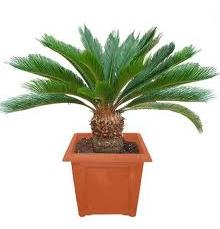|
|
 |
More than 700 plants have been identified as producing physiologically active or toxic substances in sufficient amounts to cause harmful effects in animals. Poisonous plants produce a variety of toxic substances and cause reactions ranging from mild nausea to death. Certain animal species may have a peculiar vulnerability to a potentially poisonous plant.
Attached is a list of some of the common plants which may produce a toxic reaction in animals. This list is intended only as a guide to plants which are generally identified as having the capability for producing a toxic reaction. We recommend you bookmark this page for quick reference.
If you suspect your animal may have ingested any of the substances on this list or if your pet shows any abnormal behavior (vomiting, diarrhea, staggering, etc), you should contact your veterinarian immediately. Take a sample of the suspected toxin and its packaging with you to the veterinarian. |
| BULBS |
FERNS |
FLOWERING PLANTS |
Amaryllis
Autumn Crocus
Daffodil
Day Lily
Elephant Ears
Gladiolas
Hyacinth
Iris
Lily of the Valley
Narcissus
Orange Day Lily
Tulip |
Aparagus Fern
Australian Nut
Emerald Feather (Emerald Fern)
Emerald Fern (Emerald Feather)
Lace Fern
Plumosa Fern |
Cyclamen
Hydrangea
Kalanchoe
Poinsettia |
| GARDEN PERRENIALS |
HOUSEPLANTS |
LILLIES |
Charming Diffenbachia
Christmas Rose
Flamingo Plant
Foxglove
Marijuana
Morning Glory
Nightshade
Onion
Tomato Plant
Tropic Snow Dumbcane |
Ceriman (Cutleaf Philodendron)
Chinese Evergreen
Cordatum
Corn Plant (Cornstalk Plant)
Cutleaf Philodendron (Ceriman)
Devil's Ivy
Dumb Cane
Golden Pothos
Green Gold Nephthysis
Marble Queen
Mauna Loa Peace Lily
Nephthytis
Peace Lily
Red-Margined Dracaena
Striped Dracaena
Taro Vine
Warneckei Dracaena |
Asian Lily (liliaceae)
Easter Lily
Glory Lily
Japanese Show Lily
Red Lily
Rubrum Lily
Stargazer Lily
Tiger Lily
Wood Lily |
| SHRUBS |
SUCCULENTS |
TREES |
Cycads
Heavenly Bamboo
Holly
Jerusalem Cherry
Mistletoe "American"
Oleander
Precatory Bean
Rhododendron
Saddle Leaf Philodendron
Sago Palm
Tree Philodendron
Yucca |
Aloe (Aloe Vera) |
Avocado
Buddist Pine
Chinaberry Tree
Japanese Yew (Yew)
Lacy Tree
Macadamia Nut
Madagascar Dragon Tree
Queensland Nut
Schefflera
Yew (Japanese Yew) |
| VINES |
MISCELLANEOUS/UNCATEGORIZED |
Branching Ivy
English Ivy
European Bittersweet
Glacier Ivy
Hahn's self branching English Ivy
Needlepoint Ivy |
American Bittersweet
Andromeda Japonica
Azalea
Bird of Paradise
Buckeye
Caladium hortulanum
Calla Lily
Castor Bean
Clematis
Fiddle-Leaf Philodendron
Florida Beauty
Fruit Salad Plant
Golden Dieffenbachia
Gold Dust Dracaena
Heartleaf Philodendron
Horsehead Philodendron |
Hurricane Plant
Mexican Breadfrui
Mother-in-law
Panda
Philodendron Pertusum
Red Emerald
Red Princess
Ribbon Plant
Satin Pothos
Spotted Dumb Cane
Sweetheart Ivy
Swiss Cheese Plant
Variable Dieffenbachia
Variegated Philodendron
Yesterday/Today/Tomorrow | |
| SAGO PALM WARNING - HIGHLY TOXIC TO PETS AND CHILDREN |
Pets are at particular risk since they seem to find the plant very palatable. All parts of the plant are toxic; however, the seeds contain the highest level of the toxin cycasin. If your pets ingest ANY part of this plant, the toxins in the plant lead to severe liver failure and other signs of liver failure that lead to death. The seeds are the most poisonous part of the plant and the effects on pets and humans are seizures, coma and death. Even with aggressive veterinary treatment 75-80% of animals ingesting this plant will die.
Clinical symptoms of ingestion will develop within 12 hours and may include vomiting, diarrhea, weakness, seizures, liver failure, or hepatotoxicity characterized by icterus, cirrhosis, and ascites. The pet may appear bruised, have nose bleeds (epistaxis), melena (blood in the stool), hematochezia (bloody straining), and hemarthrosis (blood in the joints). If you have pets or children, it is best to remove the palm from the environment by bagging in plastic and throwing away in the trash can or “rehome” where there are no pets or children. |

| | | |

